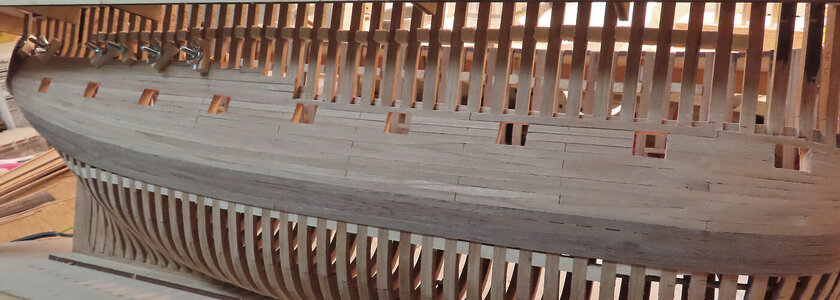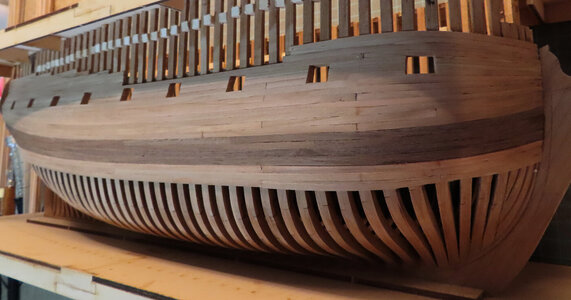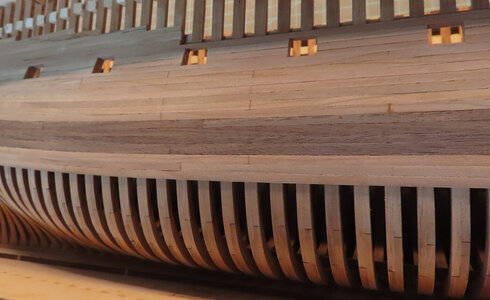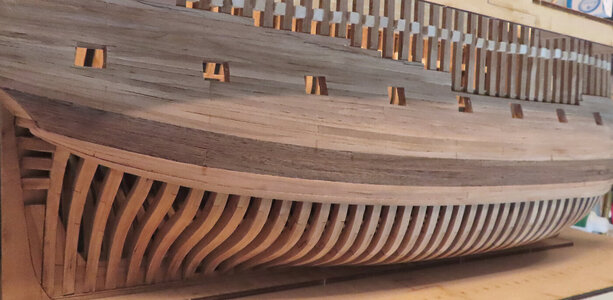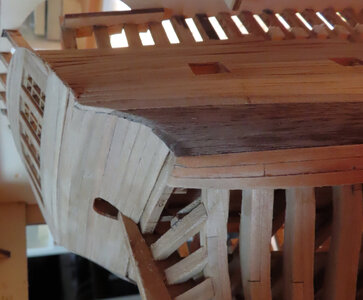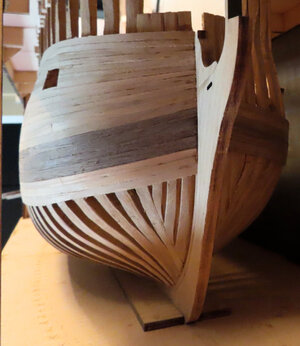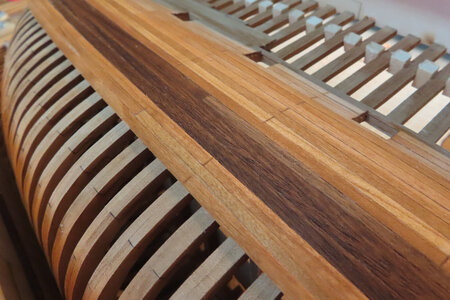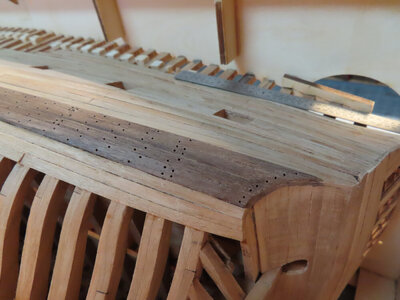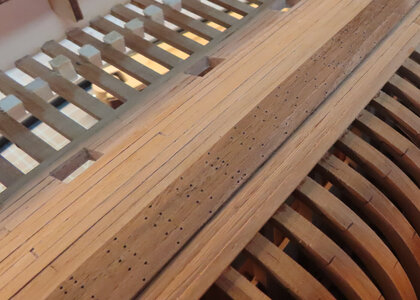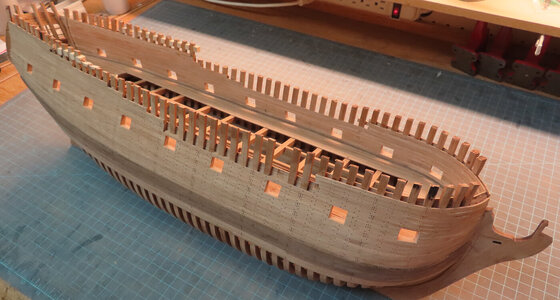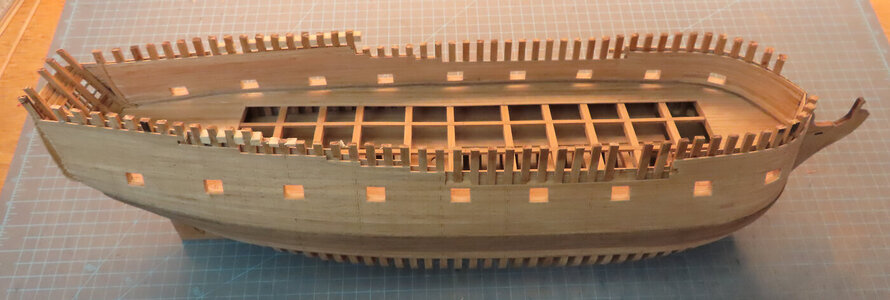I think, it is the same and I have to agree with Donnie. It doesn't matter for the most part whether it is a POB or POF you have to 'fair' either frames or bulkheads before laying down planking. However, the make of the frames assumes you will assemble the frame with minimum tolerance for further processing, while the POB is designed for a double-plank hull and have more material to tolerate for the 'fairing' process.But isn’t planking a POF model more pleasant? Kind of takes some of the reluctance away.
But...isn't it the POF designed for the open frames, without planking (most times)


